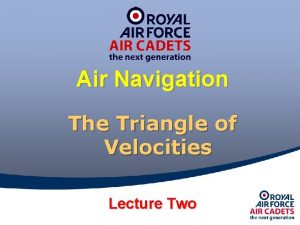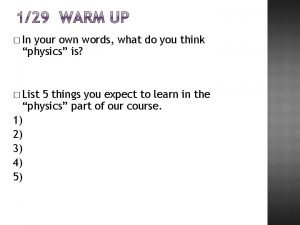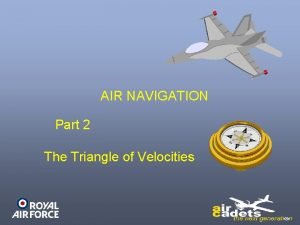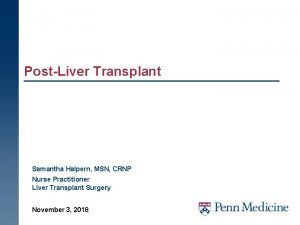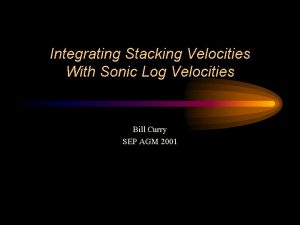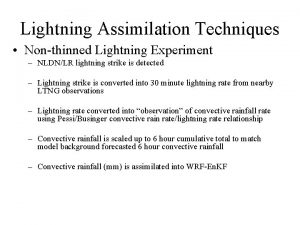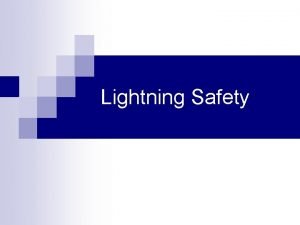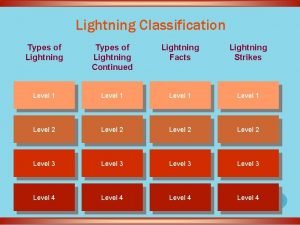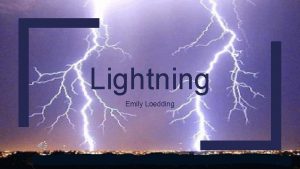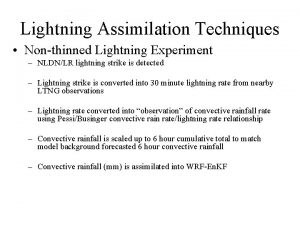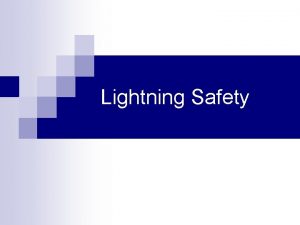Measurement and Verification of Lightning ReturnStroke Velocities Samantha









- Slides: 9

Measurement and Verification of Lightning Return-Stroke Velocities Samantha Tabor Matthew Jay Genesis Langum Mentor: Dr. Danyal Petersen

What’s The Big Deal? • Our goal is to estimate the two-dimensional velocity of a lightning return stroke. • This is important as lightning is not well understood. – Our work addresses a shortage of information about an aspect of the return stroke behavior. Filling in informational gaps (as we would like to do) spurs other research, which can lead to improved engineering of lightning-prone equipment and the improvement of public safety. • We’re using a novel measurement method; how will our results compare to velocities approximated via older methods?

Updated Method • Obtain screenshots from video data • Use an image editing software and a color meter to find the RGB % brightness (left) • Plot brightness vs. pixel height • Use progression of curve to determine angular 1 -D velocity


An Example From Our Preliminary Results • Picking a reference point on each curve yields a coordinate on the image. We can use these coordinates and basic mathematic principles to calculate a distance between points. • Then we use the speed of the camera to obtain an angular velocity. • These frames show a velocity of 5. 84*106 pixels per second

Possible Sources of Error • • • Tortuosity of the lightning channel Spatial resolution of pixels Overlay elements Lens aberrations Distance measurement Assumption of channel’s cylindrical symmetry

To Be Completed • Obtain location data from NLDN or ENTLN – Only after we’ve determine every which strike we’re using • Determine distance from building to strike using location data – GIS or programming framework • Use distance to calculate linear height of stretched lightning channel Where d = sensor size f = focal length Di = incremental distance

To Be Completed H is to be calculated for each pixel, then summed over the channel. After calculations are completed… • Determine reasonable range of error • Evaluate results; are they similar to past findings?

Questions?
